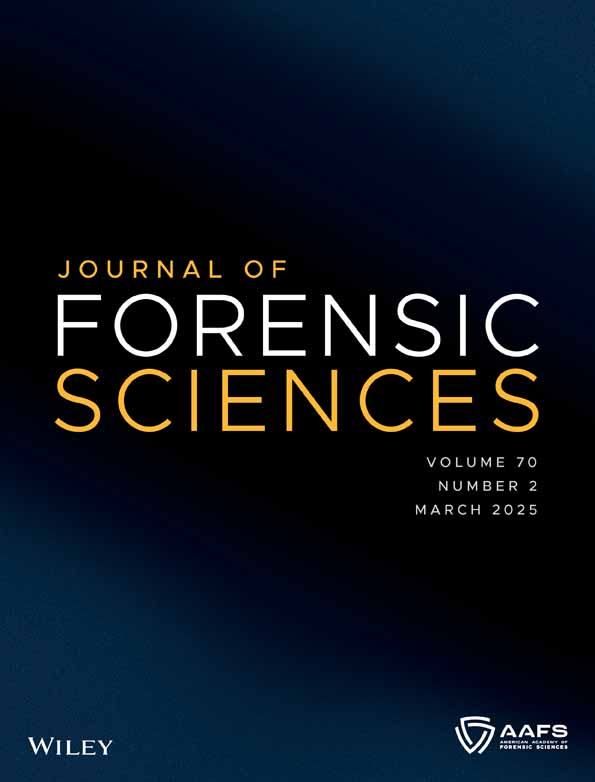Methods to prevent overdevelopment of fingermarks with 1,2-indanedione/zinc
Abstract
A piece of paper submitted as evidence can both have fingermarks with a high and low amount of sweat. When such paper is treated with 1,2-indanedione/zinc and subsequently heated at 160°C for 10 s, fingermarks with high sweat content may become overdeveloped. Attempts to prevent overdevelopment by reducing the heating time to <10 s were ineffective. However, it was found that maintaining the heating time at 10 s and reducing the temperature to below 160°C effectively prevented overdevelopment. In forensic practice involving latent fingermarks on actual evidence, an effective enhancement technique involves initially placing approximately 15 sheets of paper between the sample and an iron preheated to 160°C, and then applying heat for 10 s. This is subsequently followed by a secondary heating without the paper. This procedure has proven effective in enhancing fingermarks with both high and low sweat contents.
CONFLICT OF INTEREST STATEMENT
The authors have no conflicts of interest to declare.




